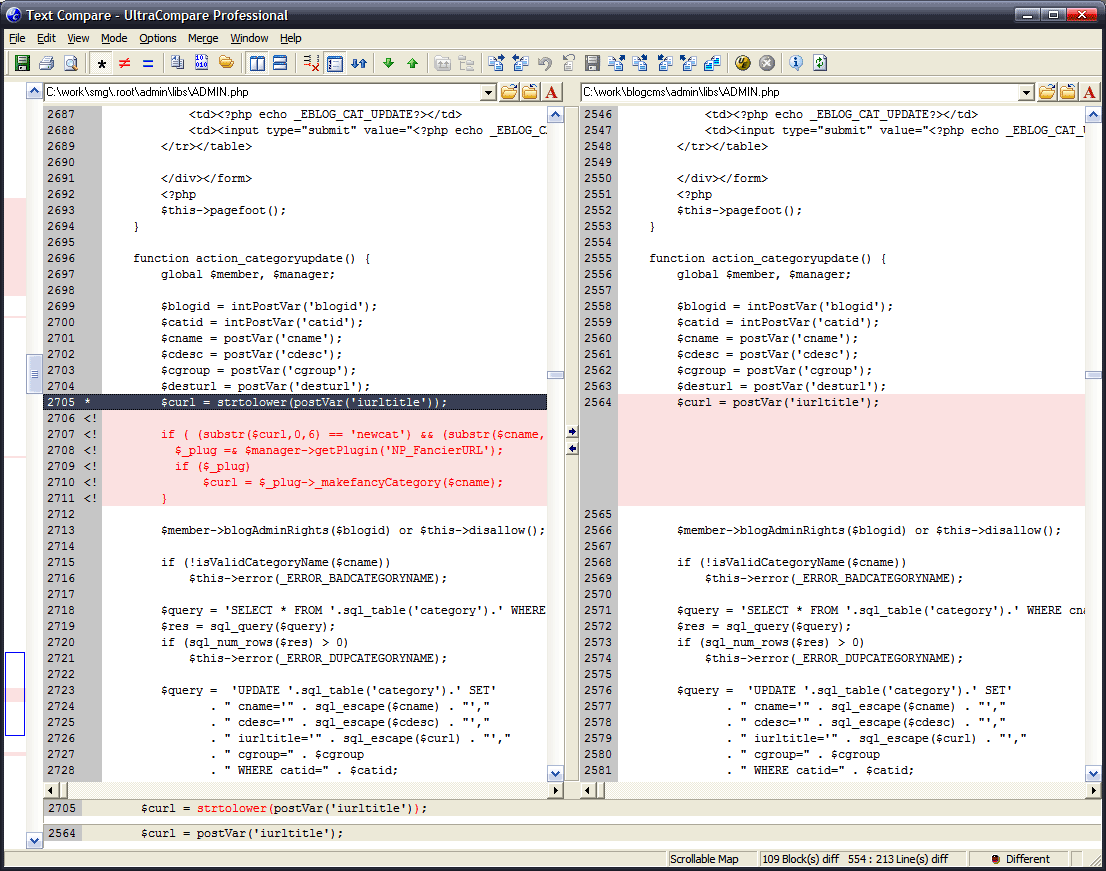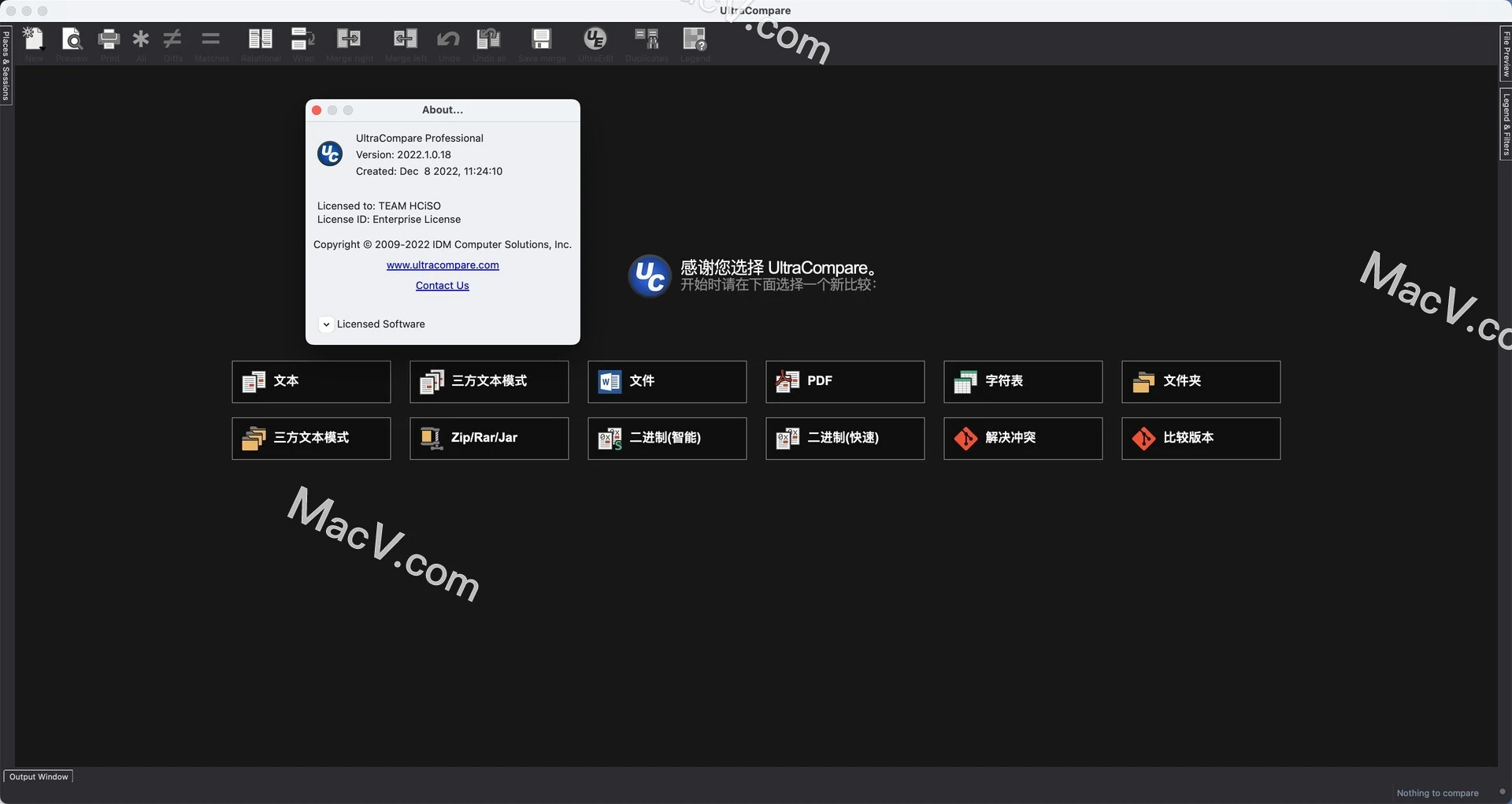

Yes, when I have done an upgrade I have been asked if I'd like to use UC Lite or try UltraCompare Pro - I always chose Lite. UC Lite has always done enough for me and been perfectly functional and never nagging. I have been using UltraEdit for over 23 years (since version 6 or so). but I can't stand how it looks/feels now. I am not entirely sure when UltraCompare Lite changed as I don't use compare files that often.
ULTRACOMPARE 15 FULL
Post a reply using the button Full Editor and Preview and attach this text file to your next post for investigation by me.

%SystemRoot%\System32\reg.exe EXPORT "HKCU\Software\IDM Computer Solutions\UltraCompare Lite" " %USERPROFILE%\Documents\ UltraCompareLite.txt"Īll the settings of UltraCompare Lite are exported with this command line into the text file UltraCompareLite.txt in the folder Documents.
ULTRACOMPARE 15 WINDOWS
Run in a Windows command prompt window the following command line:
ULTRACOMPARE 15 PROFESSIONAL
It could be that a configuration setting is stored in Windows registry with a value which requires UltraCompare Professional although that would be very unusual. There should be enabled in Compare Files/Folders dialog window in UltraEdit only the comparison options supported by UltraCompare Lite. How do start the text files comparison? UltraCompare Lite can be used only by using the Compare Files/Folders dialog window in UltraEdit.It is not possible to start ucl.exe directly and do a text comparison.

A simple text comparison of two text files is of course supported by UltraCompare Lite too. UltraCompare Pro with a comparison table showing which features are not available in UltraCompare Lite. Invokes a text compare of 1.txt and 2.There is the page UltraCompare Lite vs. Invokes a read-only merge of file1.txt and file2.txt – the differences are merged into “result.txt” and the original 2 files are not modified in any way Invokes a text compare of file.c and file.c, ignoring all text between /* and */ (comments) Text compare with advanced ignore options: Invokes a 2-way text compare of 1.txt and 2.txt with “Ignore case”, “Ignore whitespace”, and “Ignore blank lines” set, and will only report differences in output file c:\output.txt Invokes a 3-way text compare of 1.txt, 2.txt, and 3.txt and automatically saves an output file to c:\output.txt Invokes a text compare of 1.txt and 2.txt (with default options) and automatically saves an output file to c:\output.txt Resets (clears) ignore options – defaults will be usedĬreates result file in "All frames" formatĬreates result file in "Differences in context" formatĬreates result file in "One frame only" formatĬreates result file in "Side by side" formatĮnables "read-only" merge mode (original compared files aren't altered, and merged changes are saved into separate third file) Invokes quick diff check (application does not open - see " Quick Difference" power tip)Įnables "Show all" (both differences and similarities are displayed)Įnables "Show matching" (only similar lines are displayed)Įnables "Show differences" (only different lines are displayed)Įnables "Ignore lines that begin with STRING" optionĮnables "Ignore lines that contain STRING" optionĮnables "Ignore lines that end with STRING" optionĮnables "Ignore all text between STRING1 and STRING2" optionĮnables "Ignore # lines at start of file" optionĮnables "Ignore # lines at end of file" option Uc -w -r -dmf -o -title1 "myFolder1" -title2 "myFolder2" -title3 "myFolder3" Uc -w -r -dmf -title1 "myFolder1" -title2 "myFolder2" -title3 "myFolder3" -o Logical units can appear in any order on the command line so long as they are paired with their related parameters.o, -ne, -a, -title1, -ignt, -horz, etc should follow the compared file(s)/folder(s) paths or should precede the mode selector switch. “Compare mode selector” switches such as -t, -3, -p, -x, -d, and -w must always immediately precede the compared file(s)/folder(s) paths.All parameters must be separated by a space.There are a few rules to remember when using UltraCompare’s command line functionality: The order and format of how these options are used is important.


 0 kommentar(er)
0 kommentar(er)
